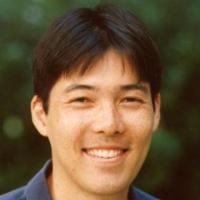|

|
Micro-Assembly Printer – A New Tool for Electronics and Materials Integration
| Abstract: |
We aim to build a new tool for integrating millions of pre-fabricated chiplets or micro-objects into systems, based on deterministic micro-assembly and transfer. The process uses chips initially in solution, and then sorts, transports, and orients chips with directed electrostatic assembly and parallel control. Assemblies are then transferred to final substrates with a stamp or continuous feed roll-based methods, and then electrically interconnected. The current laboratory systems have handled small chips (10 um – 500 um), demonstrated fine registration (<1 um and <1°), and produced centimeter scale outputs. Ultimately, massively parallel automated microassembly, analogous to a xerographic printer using microchips instead of toner, could be used for integrating circuits, microLEDs and other semiconductor components into complex, heterogeneous systems for electronics systems with millions of components such as advanced display and large area detectors. Microscale sorting and assembly could enable immature material systems, such as 2D material heterostructures for quantum science, to be rapidly studied and even manufactured. The digital nature of the fabrication process could enable ultra-customized integrated circuits hardware, which the current integrated circuit supply chain does not readily support.
|
| Speaker: |
Eugene Chow - PARC - A Xerox Company |
| Speaker Bio: |
 Dr. Eugene Chow is a principal scientist and manager of the microsystems research group in the electronic materials and devices laboratory at PARC (a Xerox Company). The group leverages microsystems technology for applications in printing for manufacturing, electronics and biomedicine. Recent projects include micro-assembly for device integration, microsprings for electronics packaging and test, and microjets for drug delivery. He leads research projects at PARC with support from Xerox, other companies and the government, and has over 100 patents. He earned a B.S. from U.C. Berkeley in engineering physics, and did his graduate work at Stanford University (M.S. engineering management, M.S. and Ph.D. in electrical engineering). Dr. Eugene Chow is a principal scientist and manager of the microsystems research group in the electronic materials and devices laboratory at PARC (a Xerox Company). The group leverages microsystems technology for applications in printing for manufacturing, electronics and biomedicine. Recent projects include micro-assembly for device integration, microsprings for electronics packaging and test, and microjets for drug delivery. He leads research projects at PARC with support from Xerox, other companies and the government, and has over 100 patents. He earned a B.S. from U.C. Berkeley in engineering physics, and did his graduate work at Stanford University (M.S. engineering management, M.S. and Ph.D. in electrical engineering). |
| Poster Link: |
Poster |
| Presentation: |
|
|
 Dr. Eugene Chow is a principal scientist and manager of the microsystems research group in the electronic materials and devices laboratory at PARC (a Xerox Company). The group leverages microsystems technology for applications in printing for manufacturing, electronics and biomedicine. Recent projects include micro-assembly for device integration, microsprings for electronics packaging and test, and microjets for drug delivery. He leads research projects at PARC with support from Xerox, other companies and the government, and has over 100 patents. He earned a B.S. from U.C. Berkeley in engineering physics, and did his graduate work at Stanford University (M.S. engineering management, M.S. and Ph.D. in electrical engineering).
Dr. Eugene Chow is a principal scientist and manager of the microsystems research group in the electronic materials and devices laboratory at PARC (a Xerox Company). The group leverages microsystems technology for applications in printing for manufacturing, electronics and biomedicine. Recent projects include micro-assembly for device integration, microsprings for electronics packaging and test, and microjets for drug delivery. He leads research projects at PARC with support from Xerox, other companies and the government, and has over 100 patents. He earned a B.S. from U.C. Berkeley in engineering physics, and did his graduate work at Stanford University (M.S. engineering management, M.S. and Ph.D. in electrical engineering).
